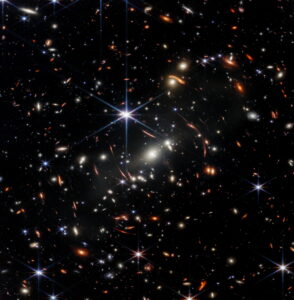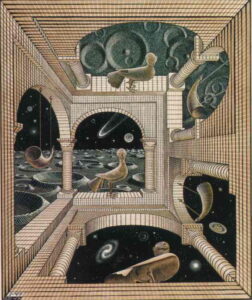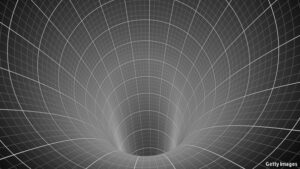
For two of my adolescent years I was convinced I would become an astronomer. I even saved up over 200 dollars to buy a reflector telescope. Although other intrusive events of the 1960s soon diverted my attention – I ended up using the money to buy a guitar – I have remained a keen amateur student of the stars ever since. I have been waiting for the new infrared images from the Webb Telescope with as much excitement as anyone else, and am dazzled by the beauty and majesty of what we have already seen. I salute the technicians who achieved this almost superhuman feat and wish Godspeed to the astronomers as they sort out and study the new data.
However, the commentaries and interpretations of what we are viewing are predictably mixed. A bit of visual drunkenness is causing a few philosophical missteps as we ask ourselves what all of those galaxies and astronomical realities mean. At the risk of being a killjoy, I would like to point out a few things we do not learn from the new images, and in principle, cannot learn, even when more pictures and spectacles become available.
“Now we are seeing the universe as it really is!” we might think. No, we are not. Even though the astronomers explain to us that the light of these objects has been travelling for millions and even billions of years before Webb was able to catch it, we tend to just ooh and awe over those big numbers (as modern science has taught us to do). We rarely bother to think about what such distances and time-spans might actually mean. The image above (confected and “translated” from multiple infrared readings), although quite stunning to view, is actually quite misleading for any understanding of the universe “as it really is.” Here are just three misapprehensions:
- The first is innocent enough, a consequence of using flat images at all. Being a two-dimensional representation of a multi-dimensional reality, the perspective is inevitably distorted. But the distortion has far more serious effects in this case. The impression given by such images is that our universe is very, very full of celestial objects. Just look at all those galaxies and stars (and whatever other sorts of object we may be gazing at)! See how they are all crowded together! In fact – and to their credit, the folks at NASA will tell us this, although few seem to want to ponder its implications – those objects are all unimaginably far from each other, separated by light-years upon light-years of virtually empty space – not only “between” them as we see them in the image, but sometimes even more so in terms of depth. What the universe is “full of,” paradoxically, is quite simply empty space (some 99.9% of it, in fact) and not celestial bodies.
- But far more disconcerting is another undisputed, but insufficiently pondered fact, namely, that what we are looking at here is history – very, very distant, mind-bogglingly remote astronomical history. We are getting signals from realities that sent those signals out – and here come the zeros again! – millions and billions of years ago. They do not, indeed they cannot tell us with any degree of certitude what those bodies are like “now” (if that word even makes astronomical sense), or even if those bodies still exist. We cannot know, and these readings, by their very nature, cannot tell us.
- However, put 1. and 2. together and the matter gets even more surreal. The “historical record” each of those little lights documents is different – often wildly different, truly astronomically different – from that of any of the others, even those that, in the image, seem closest to it. Let’s turn to a similarly bizarre, but a tad more accessible case: Imagine a drone that was sent off to take a week-long trip over the United States, filming different cities and regions, and then showing the footage to us afterwards. Now imagine that as we reviewed the geographical survey, we first witnessed the Colorado River still flowing on the surface of the Earth through the Southwest (not yet carving the Grand Canyon), then the Gold Rush in California, then Coronado trekking through present-day Kansas, then LBJ at his ranch in Texas, and finally the Twin Towers collapsing in New York – such a “documentary” would be nothing less than a bewildering historical phantasmagoria. So it is also with our lovely celestial images. This “view” of the cosmos is, in purely chronological terms, profoundly disjointed.

But there is one modern astronomical conquest of perspective that we have correctly acquired. About a century ago, we found out our Milky Way Galaxy is only one of innumerable other galaxies (current reckonings take us up to two trillion and more!). Thus, the cosmos, however empty, is extraordinarily, unimaginably vast – more so than was ever thought before. That our initial image from the Webb telescope covers only a tiny sand grain’s worth of the celestial vault only underlines this stunning update in our knowledge.
But our modern confusions will not let us stop there. We want more from space than just measurements. We want life, and life that explains our life. However, our search for intelligent extra-terrestrial life is even more afflicted with non sequiturs than the quantitative incommensurability. As a philosopher, I see no reason at all to deny that ET life might possibly exist. As a theologian, I grant the infinite God an infinite measure of wiggle room to have other worlds of intelligent creatures, whether out there in this cosmos, or in any other. But as a person with some measure of common sense, I don’t see what difference it makes. Even if we should one day detect a “howdy-do” from light-years away, the distances are so insuperable, any exchange of pleasantries is out of the question. By the time the greeting card arrived, centuries will have passed, and maybe even millennia before any return post could be collected.
We also hear, from time to time, strange philosophical, almost theological declarations: for instance, the wistful hope that these data will help us to understand “who we are” and “how we got here.” Really? A cosmos that is 99.9% empty space is going to answer such questions? This gargantuan near-vacuum of a cosmos in which our precious Earth is precariously poised can offer us as little enlightenment as to our purpose and meaning as can the atoms we are made of (likewise 99.9% empty space). If it is significance we want, we already have it in spades here on Earth.
The meaning we pursue concerns the incredibly full, mysterious, vibrant, living and manifold world in which we live, with our intricately fashioned bodies and overwhelmingly complex brains, not to mention the even greater panorama of our cultures. By trying to find accounts for all of this in the quantified realm of the stars, we are only reverting to the long since debunked project of reducing everything – chemistry, biology and culture to boot – to mere physical processes. If any message is to be found by looking into empty space with its spotted map of thermonuclear fires, the content of that message may turn out to be as vacuous as the space itself.



